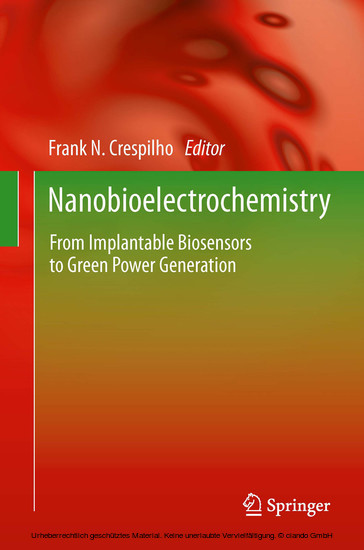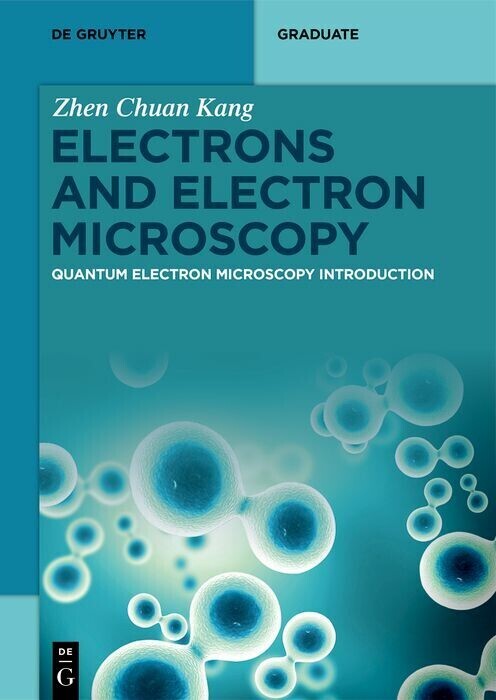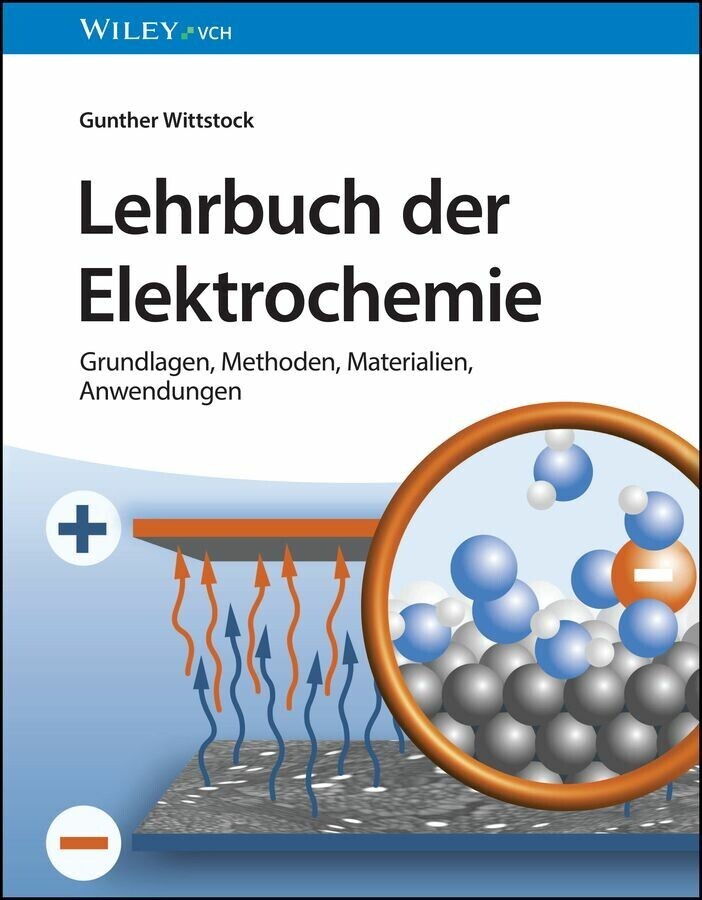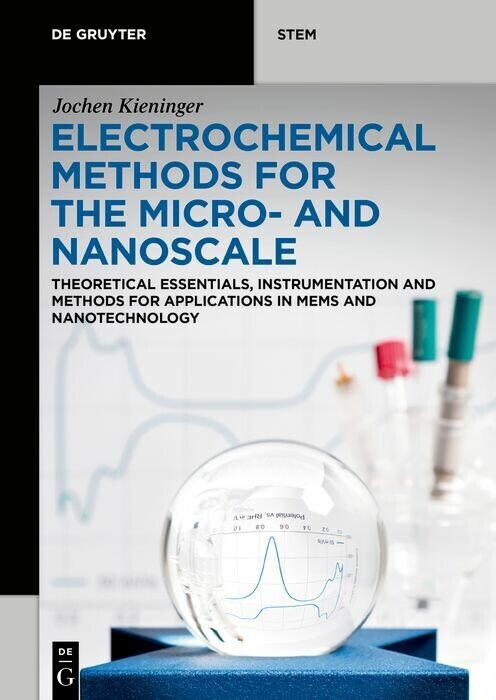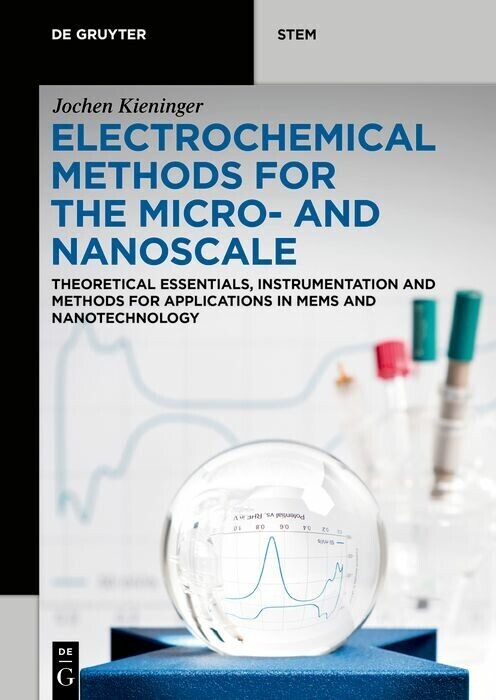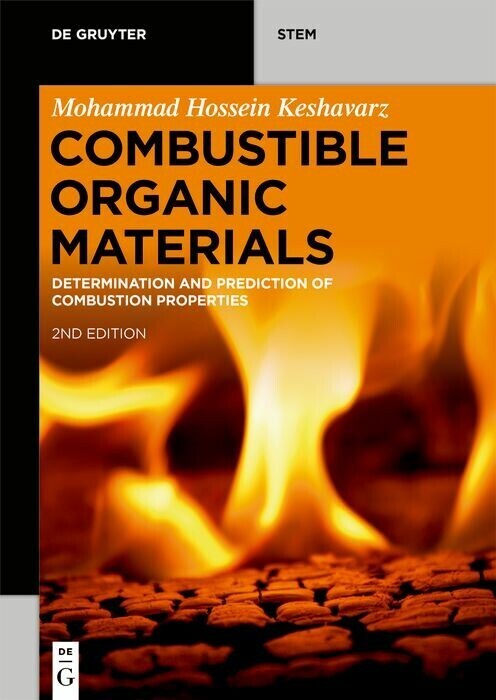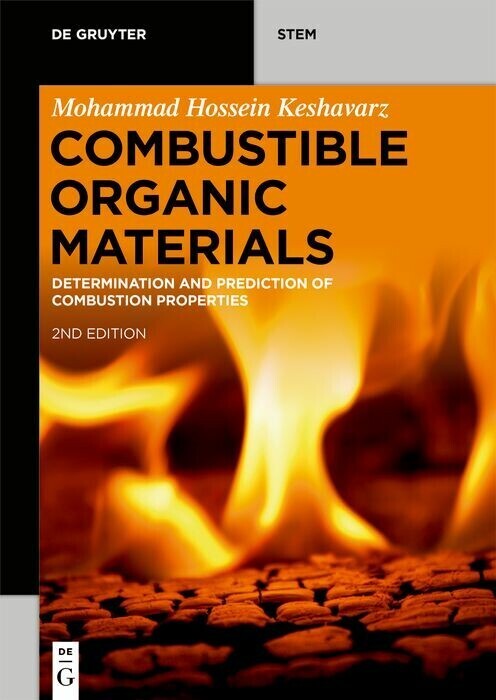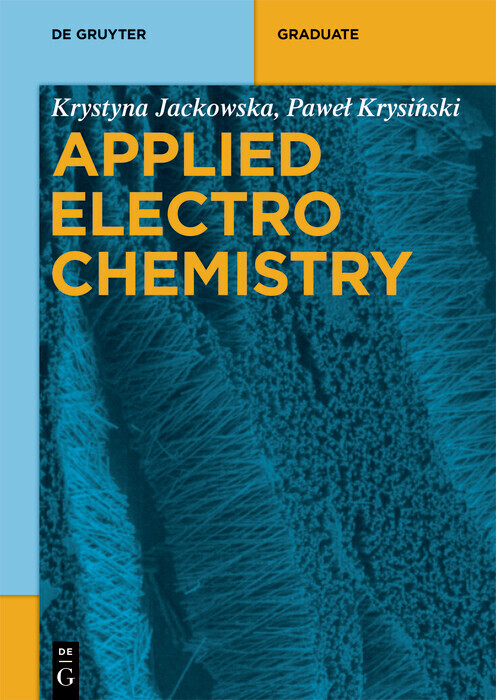Nanobioelectrochemistry
From Implantable Biosensors to Green Power Generation
Nanobioelectrochemistry covers the modern aspects of bioelectrochemistry, nanoscience and materials science. The combination of nanostructured materials and biological molecules enables the development of biodevices capable to detect specific substances. Furthermore, by using the bioelectrochemistry approach, the interaction between bio-systems and nanostructured materials can be studied at the molecular level, where several mechanisms of molecular behavior are elucidate from redox reactions. The combination of biological molecules and novel nanomaterials components is of great importance in the process of developing new nanoscale devices for future biological, medical and electronic applications. This book describes some of the different electrochemical techniques that can be used to study new strategies for patterning electrode surfaces with enzymes, organelles, cells and biomimetic systems. Also, it focuses on how enzymes and microorganisms can be used as biological catalysts in fuel cells for green power generation. By bringing together these different aspects of nanobioelectrochemistry, this book provides a valuable source of information for many students and scientists.
Dr. Frank N. Crespilho is PhD in Physical-Chemistry and Professor at Institute of Chemistry of São Carlos (IQSC), University of São Paulo (USP), Brazil. He is the author of several works covering the branch of electrochemistry, nanoscience and bioelectrochemistry. Research interests in the Crespilho group are in the areas of special materials and electrochemistry with emphasis on nanomaterials and the bio-nano interface and devices.
Dr. Frank N. Crespilho is PhD in Physical-Chemistry and Professor at Institute of Chemistry of São Carlos (IQSC), University of São Paulo (USP), Brazil. He is the author of several works covering the branch of electrochemistry, nanoscience and bioelectrochemistry. Research interests in the Crespilho group are in the areas of special materials and electrochemistry with emphasis on nanomaterials and the bio-nano interface and devices.
1;Nanobioelectrochemistry;21.1;Preface;41.2;1 Nanoscience-Based Electrochemical Sensors and Arrays for Detection of Cancer Biomarker Proteins;81.2.1;Abstract;81.2.2;1.1...Introduction;91.2.3;1.2...Biomarker Proteins and Cancer;91.2.4;1.3...Nanomaterials in Protein Sensing Devices;101.2.4.1;1.3.1 Nanomaterials in Electrochemical Immunoassays;101.2.4.2;1.3.2 Nanoparticles as Labels in Immunoassays;131.2.4.3;1.3.3 Coupling Nanostructured Surfaces with Multilabel Enzyme Detection;151.2.4.4;1.3.4 Coupling Nanostructured Surfaces with Electrochemiluminescence (ECL);201.2.5;1.4...Nanostructured Protein Sensors in Microfluidic Arrays;231.2.6;1.5...Conclusions and Future Perspectives;261.2.7;Acknowledgments;281.2.8;References;281.3;2 Nanomaterials for Biosensors and Implantable Biodevices;341.3.1;Abstract;341.3.2;2.1...Introduction;351.3.3;2.2...Nanostructured Thin Films for Biosensing;371.3.3.1;2.2.1 Langmuir--Blodgett and Layer-by-Layer Based Biosensors;381.3.4;2.3...Nanostructured Materials for Biosensing Devices;431.3.4.1;2.3.1 Nanoparticles-Based Biosensors;431.3.4.2;2.3.2 Carbon Materials-Based Biosensors;441.3.5;2.4...Miniaturized Devices and Implantable Biosensors;481.3.6;2.5...Conclusion;501.3.7;References;511.4;3 Nanomaterials for Enzyme Biofuel Cells;561.4.1;Abstract;561.4.2;3.1...Introduction;561.4.2.1;3.1.1 Principles of Biofuel Cell Functioning: Mediated or Direct Electron Transfer;581.4.2.2;3.1.2 Characterization of Biofuel Cell Performances;601.4.3;3.2...Carbon Nanotube-Based Enzymatic Biofuel Cells;611.4.3.1;3.2.1 Carbon Nanotubes for 3D Electrodes;611.4.3.2;3.2.2 Carbon Nanotubes for Direct Electron Transfer;631.4.3.3;3.2.3 Other Carbon-Based Nanomaterials;651.4.4;3.3...Nanoparticle-Based Enzymatic Biofuel Cells;661.4.4.1;3.3.1 Clay Nanoparticles;661.4.4.2;3.3.2 Metal Nanoparticles;691.4.4.3;3.3.3 Other Nanomaterials;701.4.5;3.4...Conclusion;701.4.6;References;711.5;4 Biosensors Based on Field-Effect Devices;741.5.1;Abstract;741.5.2;4.1...Introduction;751.5.3;4.2...Field-Effect Devices;761.5.4;4.3...Types of Field-Effect Devices;791.5.4.1;4.3.1 Ion-Selective Field-Effect Transistor (ISFET);791.5.4.2;4.3.2 Electrolyte-Insulator-Semiconductor (EIS);801.5.4.3;4.3.3 Light-Addressable Potentiometric Sensor (LAPS);821.5.4.4;4.3.4 Extended-Gate Field-Effect Transistor (EGFET);831.5.4.5;4.3.5 Separative Extended-Gate Field-Effect Transistor (SEGFET);841.5.5;4.4...Recent Trends Using Field-Effect Sensors;851.5.6;4.5...Final Remarks;881.5.7;Acknowledgments;881.5.8;References;881.6;5 Using Supramolecular Chemistry Strategy for Mapping Electrochemical Phenomena on the Nanoscale;941.6.1;Abstract;941.6.2;5.1...General Overview;961.6.3;5.2...Construction of Nanoplatforms and Supramolecular Electrochemistry from Functional Electrodes;971.6.4;5.3...Nanobiological Sensors as a Natural Inspiration;1051.6.5;5.4...Concluding Remarks;1071.6.6;Acknowledgments;1071.6.7;References;1071.7;6 DNA and Enzyme-Based Electrochemical Biosensors: Electrochemistry and AFM Surface Characterization;1121.7.1;Abstract;1121.7.2;6.1...Introduction;1131.7.3;6.2...DNA-Electrochemical Biosensors;1141.7.3.1;6.2.1 AFM Surface Characterization;1141.7.3.2;6.2.2 Electrochemistry;1161.7.3.3;6.2.3 Applications of DNA-Electrochemical Biosensors;1181.7.4;6.3...Electrochemical Enzyme Biosensors;1201.7.4.1;6.3.1 Carbon Electrode Substrates for Enzyme Biosensors;1211.7.4.2;6.3.2 Redox Mediator-Modified Electrodes;1221.7.4.3;6.3.3 Enzyme Immobilisation Strategies for Biosensors;1231.7.4.4;6.3.4 Direct Electron Transfer and Layer-by-Layer Self-Assembly;1251.7.5;6.4...Conclusion;1281.7.6;Acknowledgments;1281.7.7;References;1281.8;7 Electrochemical-Surface Plasmon Resonance: Concept and Bioanalytical Applications;1331.8.1;Abstract;1331.8.2;7.1...Introduction;1341.8.3;7.2...Surface Plasmon Resonance;1351.8.4;7.3...Kinetic Parameters;1351.8.5;7.4...Surface Plasmon Resonance and Electrochemistry;13
Crespilho, Frank N.
| ISBN | 9783642292507 |
|---|---|
| Artikelnummer | 9783642292507 |
| Medientyp | E-Book - PDF |
| Auflage | 2. Aufl. |
| Copyrightjahr | 2012 |
| Verlag | Springer-Verlag |
| Umfang | 138 Seiten |
| Abbildungen | w. 54 ill., 22 col. ill. |
| Sprache | Englisch |
| Kopierschutz | Digitales Wasserzeichen |

